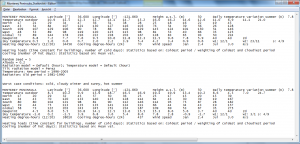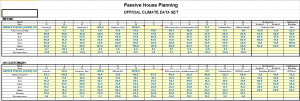Passive2:Dialog Climate
Unlike WUFI®Plus, WUFI®Passive uses monthly climate data rather than hourly data.
Localization
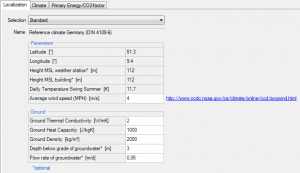
The climate file is chosen in the localization tab. WUFI's predefined climate is a reference year of Germany and can be altered by using the "user defined" tab in the scope and by browsing the desired climate file.
Due to WUFI®Passive not using hourly data, different climate files and formations are needed. So far WUFI can read .txt and .xls files as seen in the screens below and in this movie. To obtain these files/formation you can use meteonorm.
Climate
The climate tab summarizes temperature and radiation data in a table and a graph. The picture on the right can be used as a reference for the description.
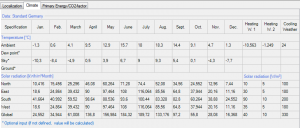
Temperature
The upper table shows the monthly mean ambient temperature and, if given in the climate file, the sky, ground and dew point temperature, though they are not necessary for the calculation. The extreme weather condition on the right end are needed to calculate the heating and cooling loads of the building.
Solar radiation
The lower section contains the mean monthly solar irradiation, separated into the four cardinal points and also the extreme weather conditions.
Primary energy/CO2-factor
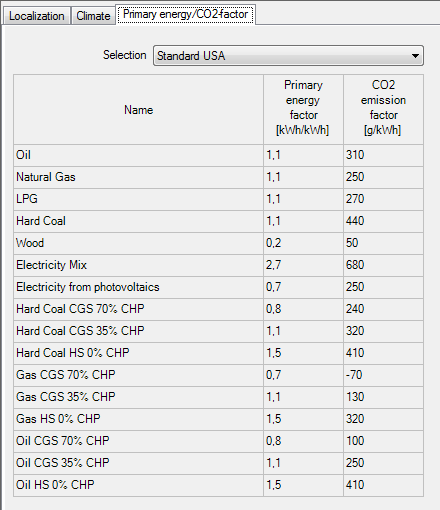
In this tab, you can see and set the primary energy factor (PEF) and the CO2-emission factor (CO2EF).
The PEF is multiplied by the site energy demand to determine the Primary Energy Demand. The PEF is influenced by both the production process and the transportation of the energy source, and therefore varies depending on the chosen fuel source.
The CO2EF converts the energy demand into an equivalent amount of CO2, also dependent on the chosen fuel source. These two factors are important when looking into the sustainability and carbon footprint of the passive building.

Though differences are minor, WUFI knows 3 different standards regarding the values of this table. If you have different values, you can create your own table in the "user defined" section.
